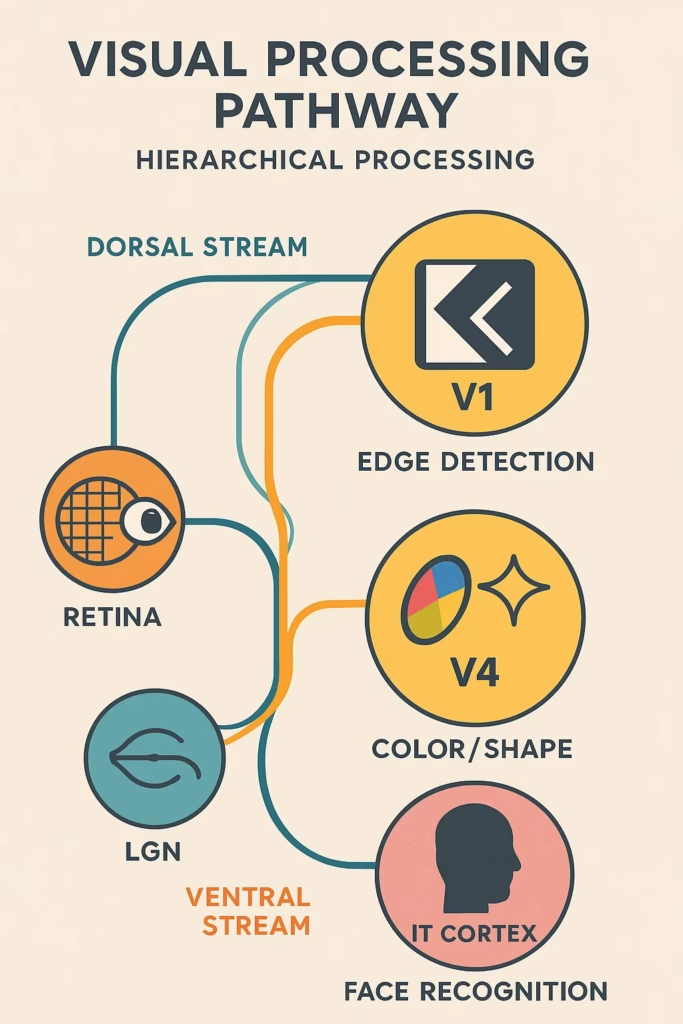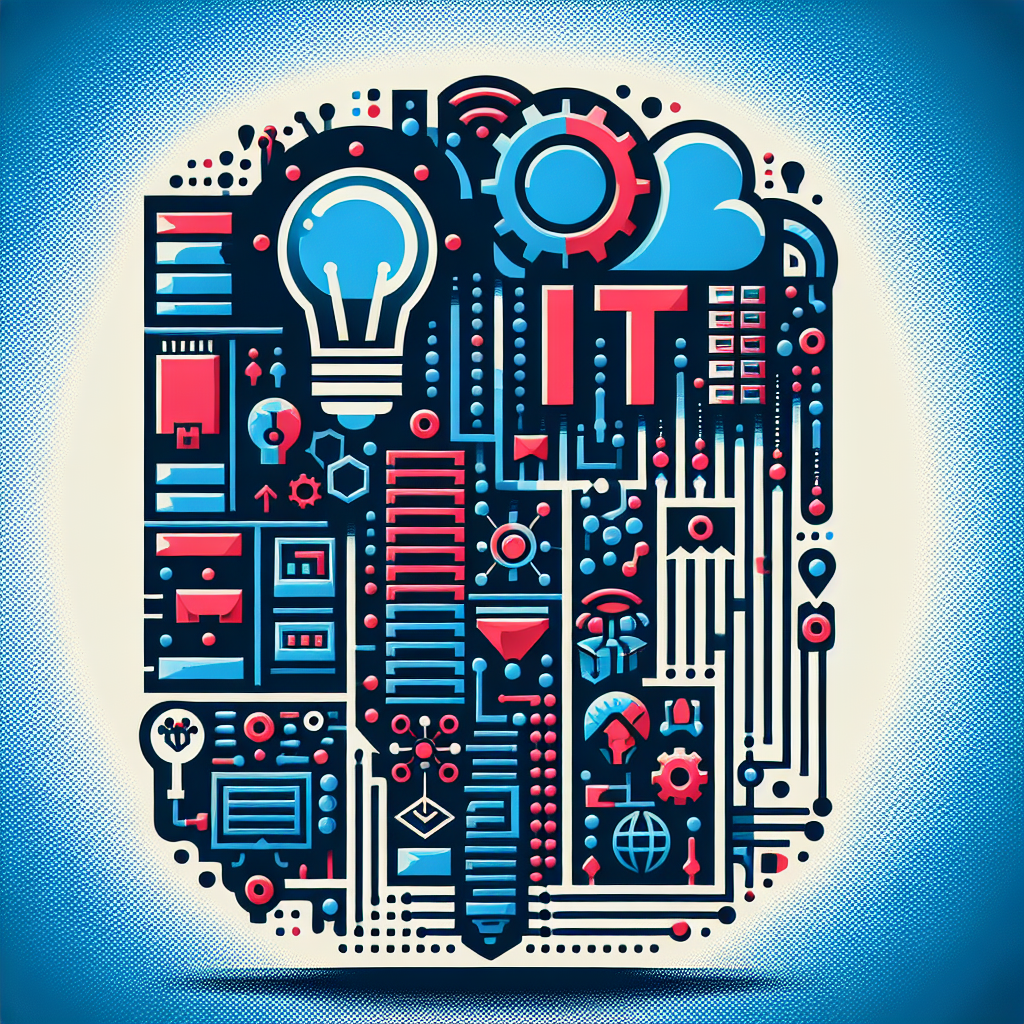Visual Cortex: The Most Complex Graphics Processor in Nature
From “Grainy Image” to “Rendered Image”: Neural Processing of Visual Reality
When you open your eyes each morning, you get an instant, flawless picture of the world in 3D resolution that surpasses any screen. But do you know what really happens behind the scenes of your consciousness? 🤔✨
Retina: The Incredible Pre-processor 👁️⚡
Imagine your retina as the most advanced graphics card ever made – it’s never a passive sensor! 🔬
🌙 Night mode: When darkness falls, rods team up like a night filming crew. Many photoreceptors send signals to a single ganglion neuron, reducing “pixels” but dramatically increasing sensitivity. Result? You see clouds in the night sky, but stars lose their sharpness. A life-saving compromise! 🌌
🎯 Edge detection already in the eye: Your ganglion cells don’t transmit raw images – they’re already searching for contrasts! Each cell has its “receptive field” with center and periphery working in opposition (“on-center/off-surround”). This is the first step to seeing the world not as a blurry mass, but as clearly outlined objects! ✨
Lateral Geniculate Nucleus: The Gate of Your Attention 🚪🔔
This small structure in the thalamus isn’t just a relay – it’s the concierge of your consciousness! When you gaze at a loved one, LGN amplifies signals from that part of the visual field, while everything else fades into the background. ❤️ It’s the neural equivalent of lens focus – but it works automatically, without your conscious intervention!
Primary Visual Cortex (V1): Where Magic Begins 🎩✨
This is where your image gets literally “rendered”! Neurons in V1 aren’t interested in dots of light – they’re artists seeking the basic lines of reality:
- 🔵 Neurons that love vertical lines
- 🔴 Neurons specialized for 45-degree lines
- 🟢 Neurons fascinated by horizontal structures
This is nature performing Fourier analysis – breaking down the world into basic spatial frequencies and orientations! Each neuron is like a small shader in a graphics card, processing specific aspects of the image. 🎨
Specialized Brain Workshops 🏭🧩
As information climbs through the cortical hierarchy, each level adds new layers of complexity:
V4 – Kingdom of Colors 🌈: This region gives life to your world! When you feel the magic of autumn leaves, thank your V4 region. People with V4 damage experience the world in shades of gray – like in an old movie. 🎞️
IT Cortex – Face Recognition 👨👩: Here reside the “face-recognition neurons” that let you recognize your mother in a crowd or a loved one’s smile. Some neurons respond exclusively to specific faces! 🥰
Two Pathways to Consciousness: “What?” vs “Where?” 🛣️🤔
Your visual reality splits into two parallel streams:
Ventral pathway (“What?”) 🎭: Goes to the temporal lobe, recognizes objects, colors, and identities. This is your inner art museum cataloging the world.
Dorsal pathway (“Where?”) 🗺️: Heads to the parietal lobe, processes location, movement, and spatial relationships. This is your internal GPS and obstacle-avoidance system.
When you reach for a glass of water, these two pathways work in perfect synchrony! 🤝
The Biggest Secret: Your Brain Deceives You! 🎭🔮
Here’s an amazing fact: Your fovea (the central part of the retina with highest resolution) covers only about 2 degrees of visual field – roughly the area of your thumb at arm’s length! 👆
So how do you see an entire room in high resolution? Your eyes constantly jump in small movements (saccades), and your brain “intelligently” fills in the gaps, creating the illusion of continuous, detailed visual field. 🤯
Therefore, the world you see isn’t a perfect replica of reality – it’s the best version your brain can construct from limited data!
Next time you open your eyes, remember the incredible neural machinery working tirelessly so you can experience the beauty of the world around you. 🌟👁️
✨ Next Post Preview:
In the next part of our series, we’ll introduce revolutionary new discoveries that are changing our understanding of vision! We’ll explore how the brain “sees” even when the eyes don’t work, how blind people can develop “visual” consciousness, and whether we’ll be able to connect human vision with artificial intelligence. Get ready for a journey to the cutting edge of neuroscience! 🚀🔬


Leave a Reply